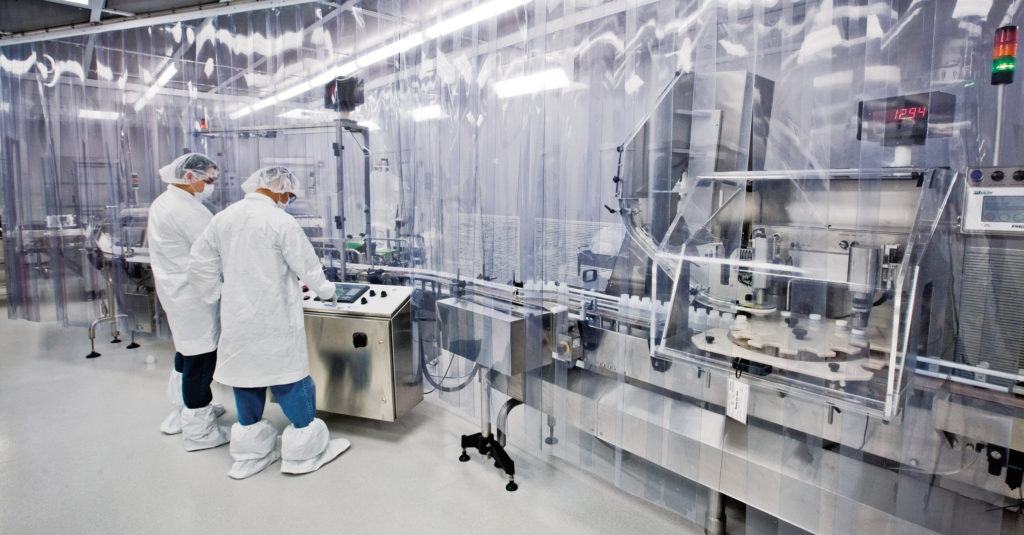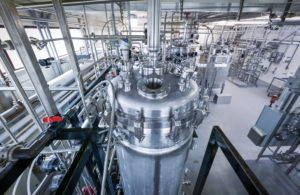This blog was written with much guidance from Jennifer Romanin, Senior Director IVD Operations and Global Service and Support, and Ron Wheeler, Senior Director, Quality Assurance and Regulatory Affairs at Promega.
A Trip Down Memory Lane
Back in the day when we all walked two miles uphill in the snow to get to our laboratories, RNA and DNA extraction were home-brew experiences. You made your own buffers, prepped your own columns and spent hours lysing cells, centrifuging samples, and collecting that fluorescing, ethidium bromide-stained band of RNA in the dark room from a tube suspended over a UV box. Just like master beer brewers tweak their protocols to produce better brews, you could tweak your methodology and become a “master isolater” of RNA. You might get mostly consistent results, but there was no guarantee that your protocol would work as well in the hands of a novice.

Enter the biotechnology companies with RNA and DNA isolation kits—kits and columns manufactured under highly controlled conditions delivering higher quality and reproducibility than your home-brew method. These systems have enabled us to design ever more sensitive downstream assays–assays that rely on high-quality input DNA and RNA, like RT-qPCR assays that can detect the presence of a specific RNA molecule on a swab containing only a few hundred cells. With these assays, contaminants from a home-brew isolation could result in false positives or false negatives or simply confused results. Reagents manufactured with pre-approved standard protocols in a highly controlled environment are critical for ultra sensitive tests and assays like the ones used to detect SARS-CoV-2 (the virus that causes COVID-19).
The Science of Manufacturing Tools for Scientists
There are several criteria that must be met if you are producing systems that will be sent to different laboratories, used by different people with variable skill sets, yet yield results that can be compared from lab to lab.
- Reproducibility: Raw materials need to meet predetermined QC specs, be purchased from qualified suppliers, and be stored in controlled environments.
- Stability: Materials are designed and tested to ensure stability during storage at the manufacturer, shipping, and storage in customer laboratories.
- Scale: Your product needs to perform consistently whether it is manufactured in small lots or at large scale.
- Water: Consistent water quality is essential, and it’s not easy to achieve. We’ve worked with customers troubleshooting experiments, only to find the problem was the laboratory water. There is a reason many Promega kits include nuclease-free water as a QC-tested component.
- Clean spaces
- Production and product finishing spaces must be controlled to reduce or eliminate contaminants—from contaminating microbes to contaminating nucleic acids to contaminating compounds that could adversely affect product performance (e.g., enzyme inhibitors).
- For amplification-based assays, primers must be highly specific and free of any other contaminating nucleic acids.
- Robust Manufacturing Design
- Producing an enzyme at large scale that consistently yields the same performance in every scientist’s hands is complex, and maintaining that consistency from batch to batch is no simple task. It requires a production workflow that is solid, and meaningful QC tests that are also well designed and performed using standard protocols.
- Product finishing: Filling and packaging. Personnel are trained and tested on specific processes, both manual and automated. Critical attributes, such as fill volume must be tested using standard protocols. Is that cap on tight enough to protect the liquid inside, but not so tight that it spills when someone tries to open it?
- Quality Monitoring
- Every step of the manufacturing process must be monitored: From training your production team, to ensuring accuracy of pipettes, balances, and liquid handling robots, to producing and packaging the product.
- Shipping and Distribution: The packaging and distribution channels must be tested and checked too. What happens if the package in the belly of a cargo plane isn’t designed to keep the product safe in this environment? Does the product still meet the QC specs at the end of the trip?
- Order Fulfillment: Biotechnology companies need a reliable logistics chain so that reagents and systems can be sent anywhere in the world with confidence that the products will arrive on time and in good condition.
Evaluating a Biotech Supplier

Biotech companies, like many other industries, can certify to international standards (ISO) for quality. An organization achieving ISO certification has demonstrated to a third party auditor that the organization meets all requirements of the standard and has implemented a quality system capable of developing, manufacturing, testing and delivering high-quality products around the world. The auditor periodically visits the company and checks every step in their process from employee training to the production workflow and equipment.
Promega first certified to the International Organization for Standardization (ISO) for quality management systems in 1998, and that commitment continues today. ISO certification exemplifies our commitment to our clients, our business and all those who rely on and benefit from the use of our products. The Promega Madison, USA, facility maintains certification to ISO 9001 and ISO 13485, the standard for the manufacture of medical devices. We also maintain certification to ISO 18385, which focuses on minimizing the risks of human DNA contamination in products for forensic customers. Currently 15 Promega facilities around the world have certified to ISO standards. You can have confidence in our ability to manufacture products reproducibly and to provide the required quality documentation. These requirements include: • Detailed manufacture and QC documentation • Production and process controls • Product Certificate of Analysis • Traceable product batch records • Product stability programs • Product change control and notification procedures • Supplier evaluation and qualification program • Equipment maintenance and calibration program • Nonconforming product and complaint-handling procedures • Design control
In Summary
As much as I relish telling the tales of my home-brew days, I appreciate even more what goes into producing reagents that allow scientists across the world to achieve reliable, reproducible results, consistent enough to allow comparison and collaboration no matter where the results were generated. When you are dealing with pandemic, that kind of collaboration and comparison are essential to successful containment and treatment.
Related Posts
- Meeting Customer Needs in Response to Market Dynamics: Responding to the Coronavirus Pandemic
- Testing for COVID-19: How it Works
Michele Arduengo
Latest posts by Michele Arduengo (see all)
- The Casual Catalyst: Science Conversations and Cafes - July 18, 2024
- Cancer Moonshot: Solving Tough Problems - May 28, 2024
- Automated Sampling and Detection of ToBRFV: An Emerging Tomato Virus - April 25, 2024
